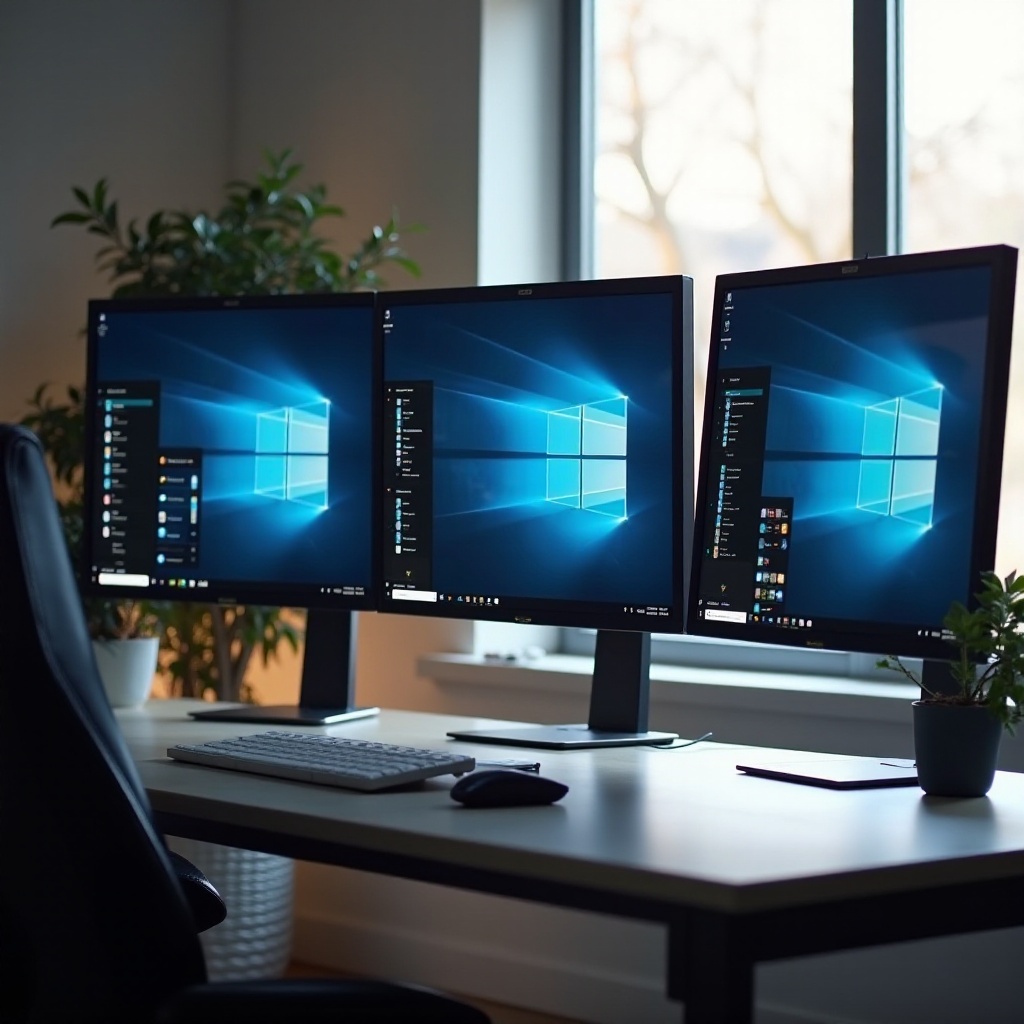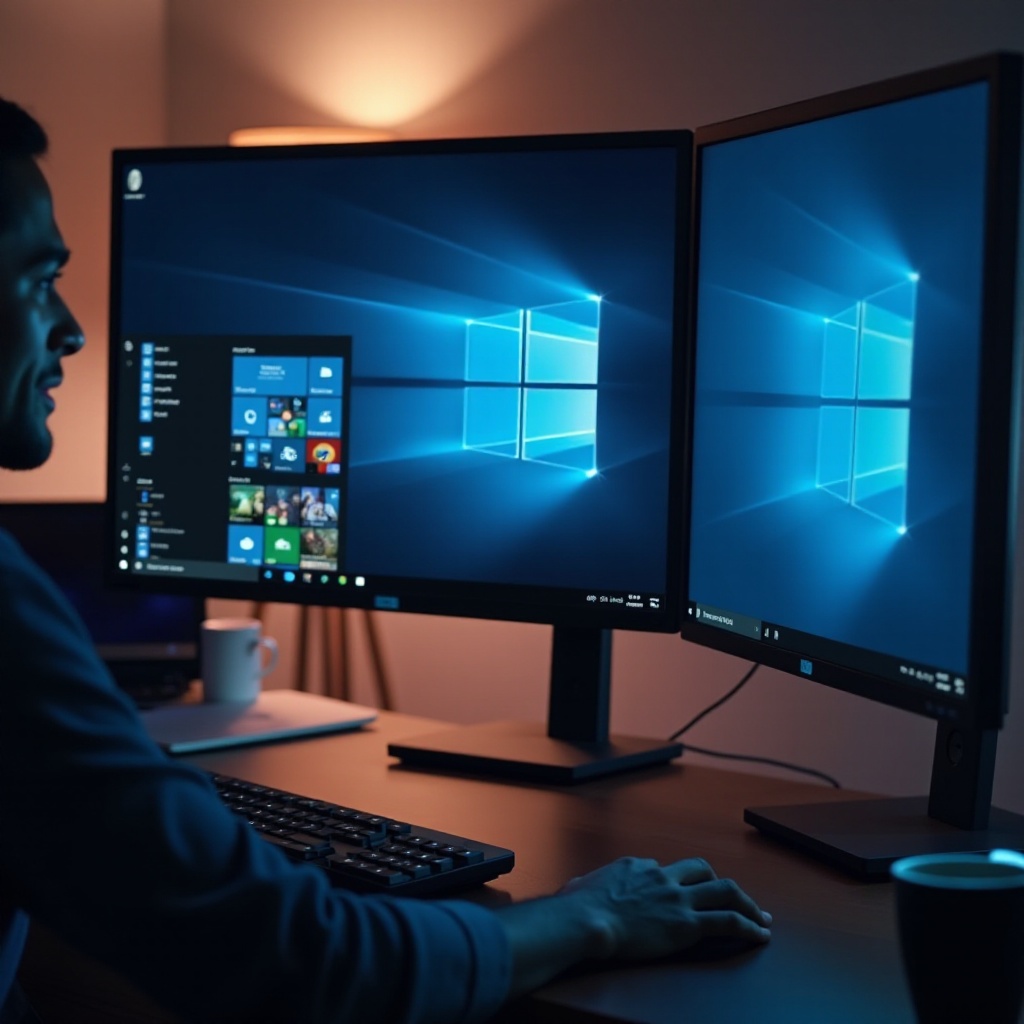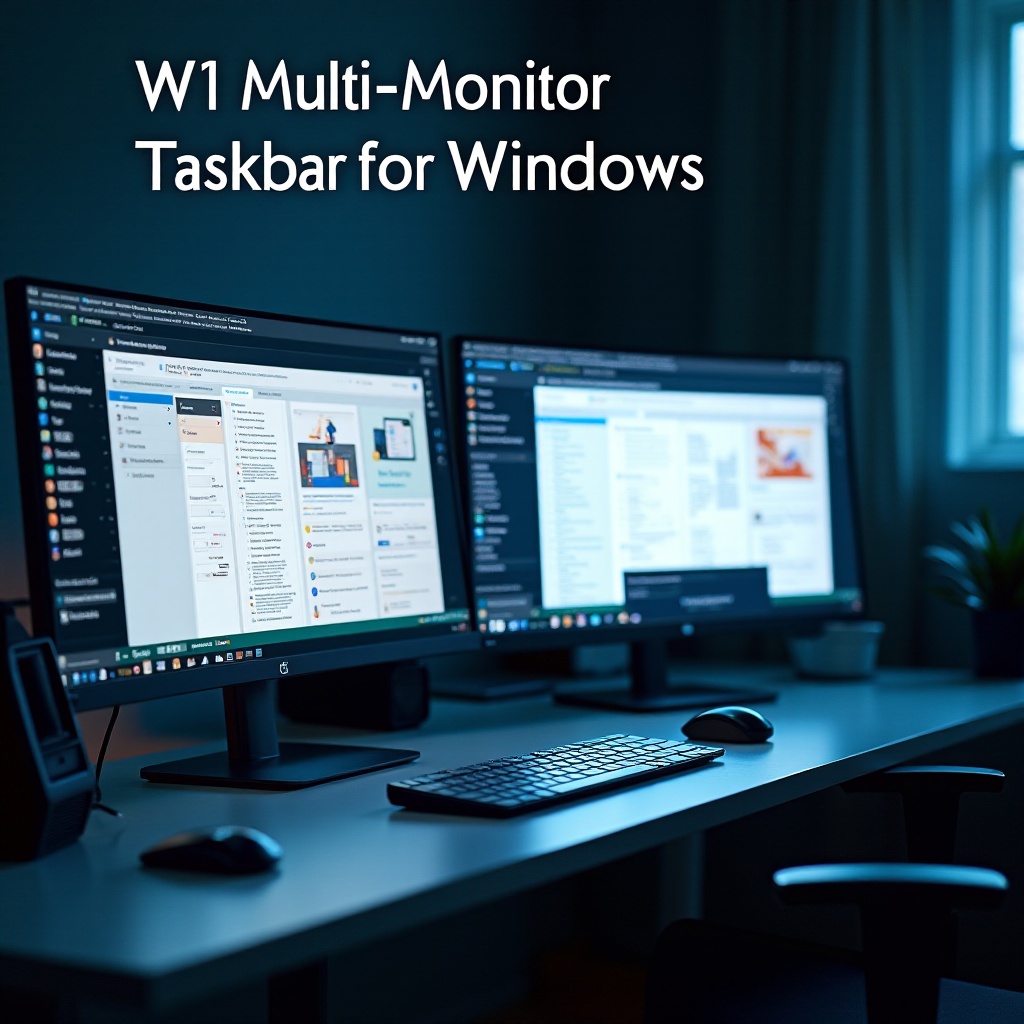Introduction
Windows 11 offers an enhanced user experience, especially for those using multiple monitors. A multi-monitor setup streamlines your workspace, significantly boosting productivity. Central to this setup is the ability to customize the taskbar across different screens. This guide covers essential aspects like setting up a multi-monitor environment, customizing taskbars, utilizing key features, troubleshooting common issues, and adopting best practices for efficient workflows.

Setting Up Your Multi-Monitor Environment
Setting up a multi-monitor environment in Windows 11 is straightforward but requires some initial configuration to ensure everything functions smoothly:
- Connect Your Monitors: Begin by physically connecting your additional monitors to your computer. You might use HDMI, DisplayPort, or USB-C connections, depending on your hardware.
- Configure Display Settings:
- Right-click on your desktop and select ‘Display settings.
- Arrange the monitors to match your physical setup by dragging them into alignment.
- Choose the primary display by selecting the monitor and checking the ‘Make this my main display’ option.
After completing these steps, both displays should function harmoniously. Now, let’s dive into how to customize the taskbar on each screen.
Customizing Taskbars Across Multiple Monitors
Customizing the taskbar is vital for maximizing productivity on a multi-monitor setup. Windows 11 provides several options to achieve this:
- Enable or Disable Taskbars on Specific Displays:
- Navigate to the display settings and scroll to the ‘Multiple displays’ section.
-
Toggle the ‘Show taskbar on all displays’ option to enable or disable taskbars on each screen according to your needs.
-
Customize Taskbar Buttons:
- Right-click on the taskbar and go to ‘Taskbar settings.
- Under ‘Taskbar behaviors,’ choose how taskbar buttons should be presented: ‘On all taskbars,’ ‘Main taskbar and taskbar where window is open,’ or ‘Taskbar where the window is open.
-
Select the appropriate option based on your workflow. For example, if you want to see all open apps on each taskbar, choose ‘On all taskbars.
-
Personalize Taskbar Appearance:
- Customize each taskbar’s appearance by changing colors, adding or removing widgets, and pinning specific apps.
- For a consistent look across monitors, apply uniform settings. Alternatively, you can diversify each monitor for different tasks, promoting better multitasking.
These settings ensure that necessary tools are always at your fingertips, providing a smoother user experience.
Taskbar Features for Enhanced Multi-Monitor Navigation
Several features in Windows 11 enhance the taskbar’s efficiency in a multi-monitor setup:
- Virtual Desktops:
- Virtual desktops allow you to create separate desktops for different tasks, which can span across multiple monitors. Access it via the Task View button on the taskbar.
-
Differentiate workspaces by customizing each desktop with unique backgrounds.
-
Snap Layouts and Snap Groups:
- Organize open windows using snap layouts by snapping them into grids on each monitor.
-
Create snap groups to quickly switch between different layouts containing grouped windows, ideal for segmented workflows.
-
Keyboard Shortcuts:
- Utilize keyboard shortcuts for better navigation:
- Win + P: Switch between multi-monitor modes.
- Win + Arrow Keys: Snap windows in different directions, using Shift to include more screens.
These features facilitate quick task transitions, ensuring an environment where productivity is guaranteed.

Troubleshooting Multi-Monitor Taskbar Issues
Sometimes, using a multi-monitor setup may present a few challenges. Here are solutions to common problems:
- Taskbar Not Displaying on One Monitor:
- Check connections and ensure all displays are recognized in the display settings.
-
If the issue persists, restart Windows Explorer from Task Manager by pressing Ctrl + Shift + Esc.
-
Taskbar Icons Not Syncing:
- Verify that the settings under ‘Taskbar behaviors’ are configured to display icons as needed.
-
Perform a system update and ensure you have the latest drivers for your graphics hardware.
-
Lag or Performance Issues:
- Reduce unnecessary startup applications to enhance system performance.
- If lag persists, consider upgrading hardware, such as adding more RAM or a better graphics card.
Regular updates and maintenance can help prevent these issues.
Best Practices and Advanced Tips
To maximize productivity with a multi-monitor taskbar, consider these best practices and advanced tips:
- Consistent Calibration:
-
Ensure color calibration is consistent across all monitors for uniform visual output.
-
Taskbar App Grouping:
-
Group related application windows on the same monitor to minimize distractions and streamline your workflow.
-
Use Third-Party Tools:
- For advanced taskbar functionality, consider third-party tools like DisplayFusion or Actual Multiple Monitors. These tools offer enhanced customization options beyond native Windows features.
By following these practices, you can create an optimized and efficient multi-monitor setup that significantly enhances your workflow.

Conclusion
A well-configured multi-monitor taskbar in Windows 11 is a powerful tool for productivity enthusiasts. From setting up your environment to customizing the taskbar and adopting best practices, these strategies help you work smarter, not harder. Embrace these techniques to elevate your multi-monitor experience and streamline your workflow like never before.
Frequently Asked Questions
How do I set different taskbars for multiple monitors in Windows 11?
Go to taskbar settings, where you can toggle the ‘Show taskbar on all displays’ option and customize the visibility and behavior of taskbar buttons.
Can I customize the taskbar on each monitor differently?
Yes, you can personalize each taskbar with different pinned apps, colors, and widgets, catering to your workflow requirements.
What are common issues faced with multi-monitor taskbars and how can they be resolved?
Common issues include taskbars not displaying correctly or icons not syncing. These can often be resolved by adjusting display settings, restarting Windows Explorer, updating system software, or performing hardware checks.